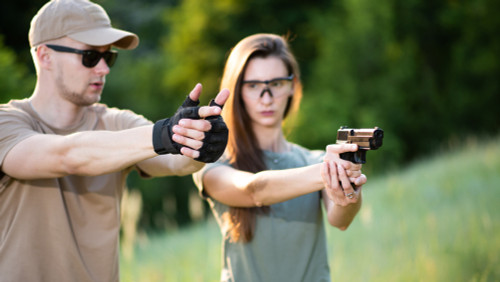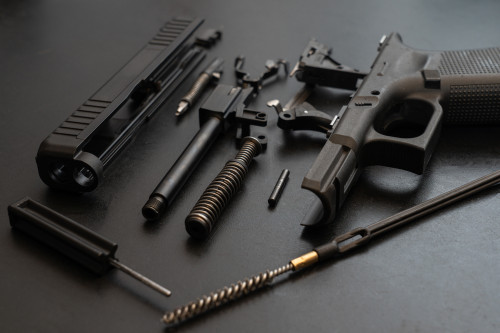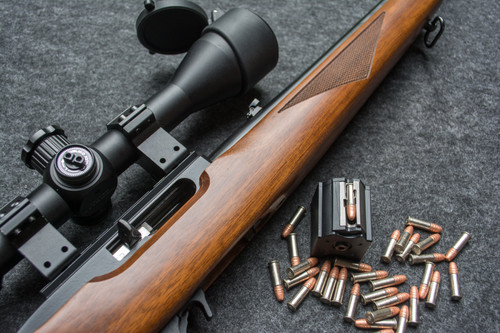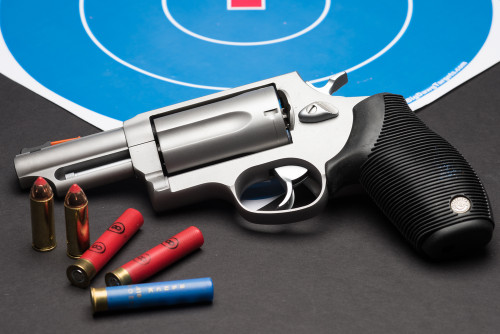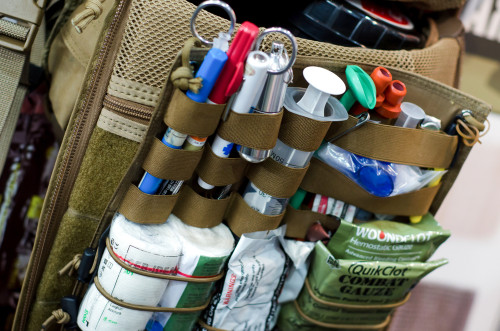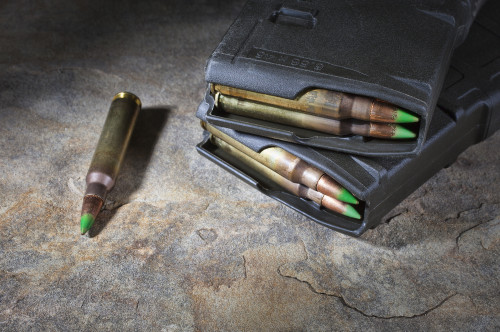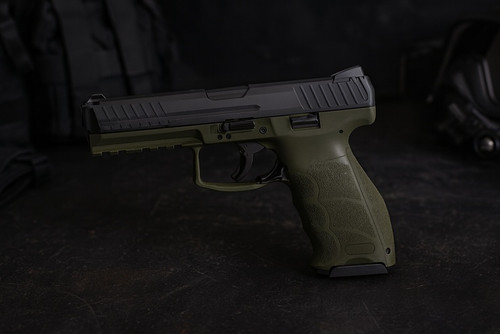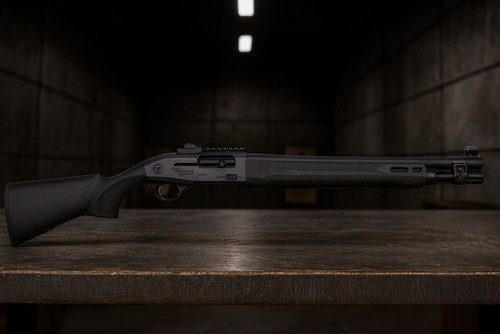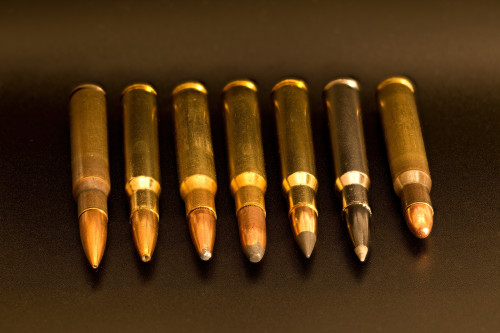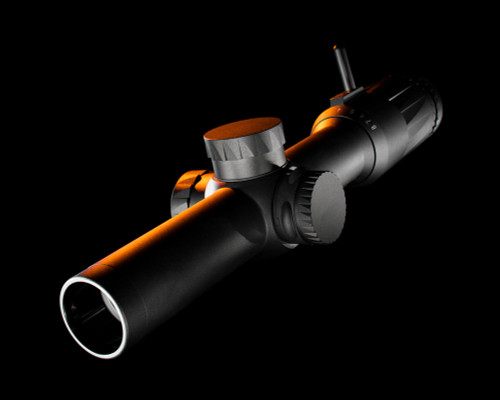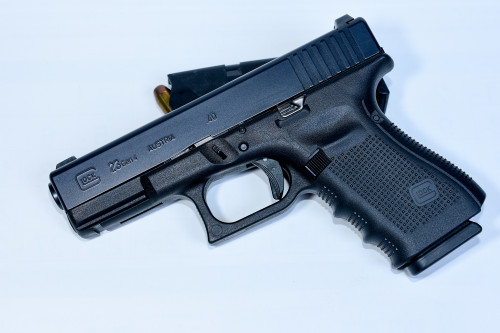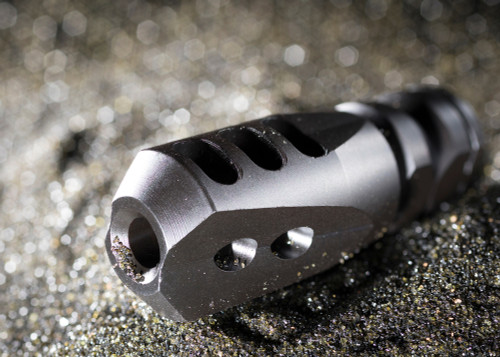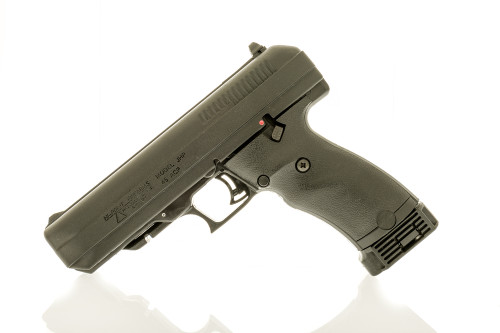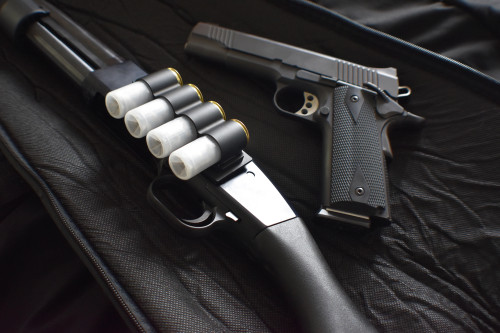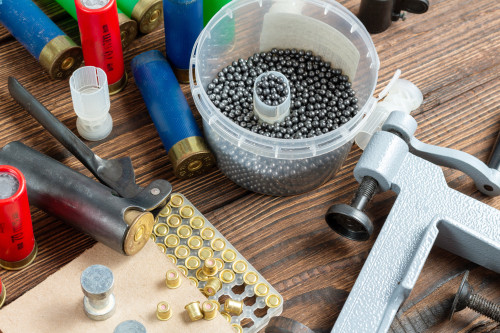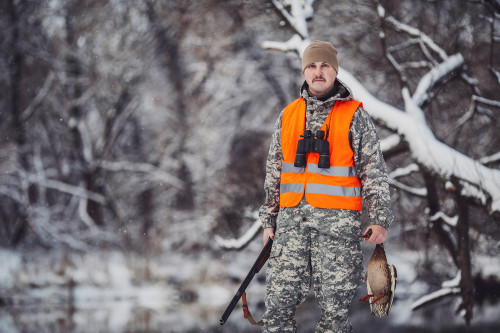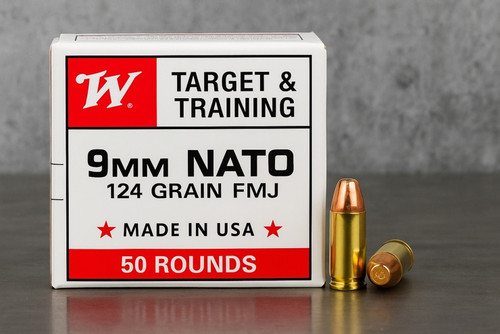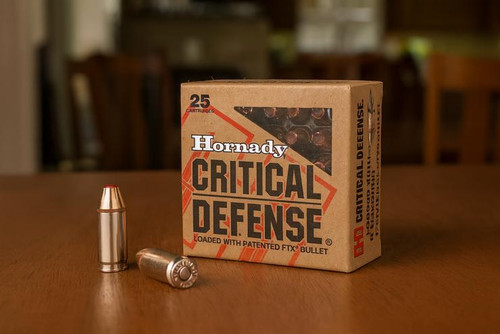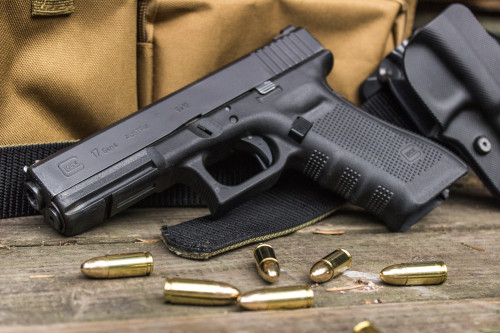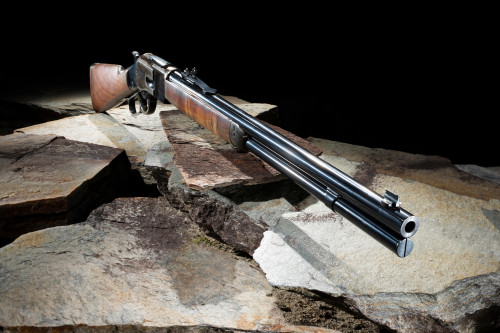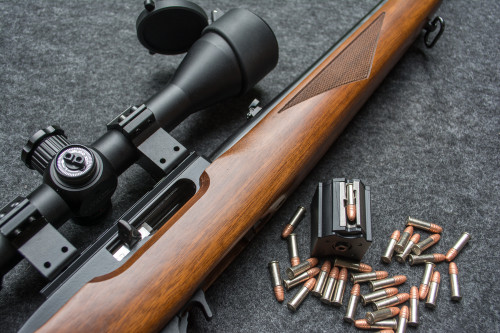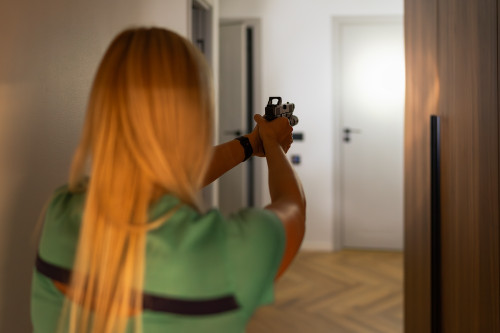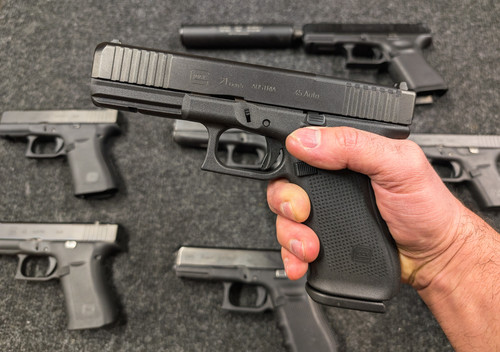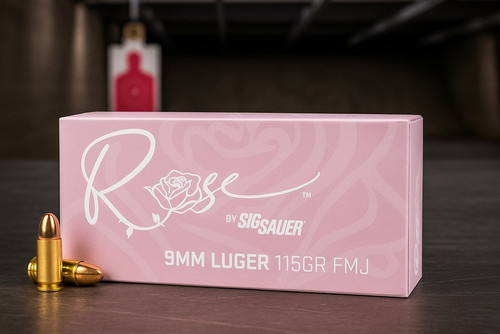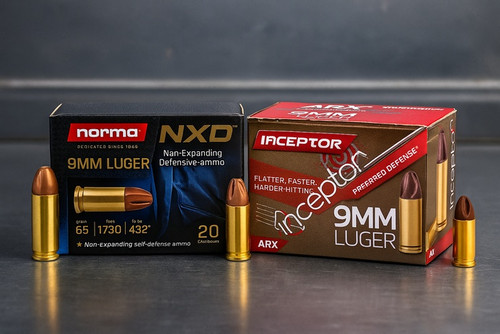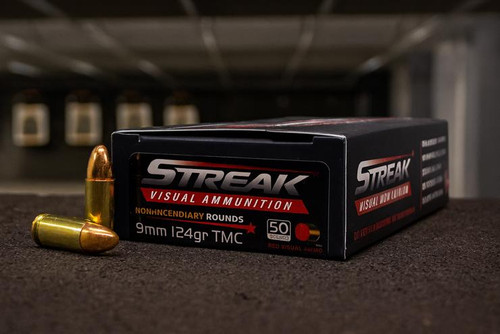So, you took the leap and bought your first gun. Good. Now, you need to learn how to use it.
While movies teach us that anyone can pick up a gun and magically become a crack shot, reality is a little different. Effective gun handling requires focused training and practice, and we want you to be a valuable asset in the world — not another liability.
If you're a new shooter, it’s easy to develop bad habits that can hinder your shooting skills for years to come. However, when you first pick up a gun, you might not know exactly why you’re missing the target or what mistakes you’re making.
That’s why we recommend seeking out expert instruction as soon as possible to make sure you’re doing things correctly from the start. In the meantime, learning these mistakes can help you avoid some common pitfalls most beginner shooters encounter — we know you’re better than that.
Let’s look at 9 mistakes common to new (and even some experienced) handgun owners that will make you a poor shooter or even put you in danger, plus how to avoid them all.
9 Common Beginner Gun Owner Mistakes
This list of mistakes is far from exhaustive, but it should get you moving in the right direction.
1. Not Taking Gun Safety Seriously
First and foremost, you need to consider safety. Before you can do any good with a gun, you have to make sure you’re not doing anything bad with it. Your gun is almost certainly the most dangerous tool you will ever own, so it’s important to avoid complacency and respect its destructive power. The moment you let down your guard, tragedy will strike.
Remember the four laws of gun safety:
- Treat every gun as if it is loaded.
- Never point the gun at something you are unwilling to destroy.
- Be sure of your target and what’s beyond.
- Keep your finger off the trigger until you’re ready to fire.
You also need to consider safety and security when the gun is not in use. Consider the other members of your household and their accessibility to the gun. You need to protect your kids from the gun, but you also need to access the gun to protect them from intruders. Finding the right balance between storage and accessibility is a serious and important challenge.
2. Building Bad Habits
We’re always building habits whether we intend to or not. You may not realize it, but your effectiveness with a gun often comes down to the quality of your habits and automatic responses. Remember, a gunfight is probably the most stressful situation you could ever experience. Under extreme stress, you will default to automatic responses — so make sure they benefit you and those around you.
Beyond direct conflict, everything related to guns depends on good habits. Safety, storage, maintenance, handling — you have to do each right every time. Even if nobody is watching, you’re tired after a long day, or you’re home alone, do it right. Never miss an opportunity to build good habits.
Remember that slow is smooth, and smooth is fast. When drilling and practicing certain techniques (like drawing, changing targets, etc.), practice slowly so you can focus on completing the movement perfectly each time — and we do mean perfectly. The stakes are too high for anything less. Do it enough times to perfection, and it will be damn-near perfect when you do it by instinct in a real-life scenario.
3. Hurrying Past the Fundamentals
Here’s a hot take: The goal of shooting is to accurately put rounds on target.
Of course, everyone agrees with this. However, too many people complicate the process. In essence, hitting your target depends on two key factors: sight alignment and trigger control. Shooting is all about aligning the sights with your target, then activating the trigger without disturbing the sights. Assuming the gun isn’t bent, the bullet will hit the target.
In the sea of shooting advice, never forget the importance of this fundamental skill set. It’s also important to focus on other fundamental techniques (stance, grip, breathing, drawing, etc.) but the fundamentals of sight alignment and trigger manipulation are often most important. Focus your training here first before trying more advanced skills. Fortunately, you can practice the fundamentals at home without firing a shot.
4. Not Focusing on the Front Sight
When first learning sight alignment, most shooters want to focus on the target. After all, that’s what you’re shooting at, and it seems counterintuitive to focus on anything else, right?
This is a mistake. When aligning your iron sights, always focus on the front sight post (the one near the muzzle). Once you align your sights, cover the target with the front sight post so that when you focus on that post, the target disappears behind it.
Why? Because you can only focus on one thing at a time, and sight alignment is most important. You’re better off shooting a blurry target with clear sights than trying to hit a clear target with blurry sights. Sure, it’d be great to have the full picture in focus, but until we get bionic eyeballs, front sight focus is the optimal compromise.
5. Ineffective Trigger Control
Many new shooters spend so much time aligning the sights and gaining a proper sight picture that they yank the trigger as soon as the posts align on the target. Your arms might get heavy while aiming or you might have trouble holding the firearm still in the first place. If so, you might try to make the shot as quickly as possible while it looks right. This is one of the biggest newbie mistakes, as a quick trigger pull can make you shoot high right, low left, or otherwise slightly off from where you’re aiming.
Instead, press through the trigger as smoothly as possible. Yanking, pulling, squeezing, or any other motion can seriously throw off your shots. You may not even realize it, but if your shot groups are off to one side or the other, you’re probably yanking or jerking the trigger. So it’s important to practice the fundamentals slowly to perfection several times, so you can analyze and correct your movements.
How Much Finger Is on the Trigger?
Many shooters debate about exactly how much finger to put on the trigger. However, this is something you’ll only figure out through practice. As a general rule, you want to create a fulcrum with your finger, not a vice. The middle of the distal portion of your trigger finger should rest directly on the trigger. This will allow your finger to press the trigger straight back and not at an angle. You want to strike a balance here — not too much finger but not just the tip of the finger, either. Both will push or pull your shot in some direction.
A good coach can diagnose your trigger control problems by watching you shoot and analyzing your targets. Often, too much trigger finger will send your rounds to the right while too little will send your rounds to the left (or vice versa for a left-handed shooter). Find the middle!
6. Anticipating the Shot
Flinching or anticipating the shot can also disrupt your aim. When you anticipate, you might start moving the gun a fraction of an instant (to compensate for the recoil) before you finish pressing the trigger. This will throw off your sight alignment just before the bullet leaves the gun. Instead, the shot should always come as a surprise.
Don’t be too hard on yourself here. Guns are loud and intimidating, so flinching is a natural response. As you train and become more comfortable with the sound and feeling of shooting, you will anticipate and flinch less. Training and experience is the solution here.
7. Gripping The Gun Wrong
A weak grip makes for poor recoil control. Remember, you’ve got an explosive projectile coming out of your hands, not a bouquet of flowers. Grip it tight. Don’t squeeze so tight that your arms start shaking, but squeeze just enough that the gun isn’t jumping all over the place. We have to control recoil to the best of our ability.
That said, grip isn’t all about tightness, but placement and hand formation also. Since all the recoil occurs at the top of the gun, set your grip as high as possible, with your fingers just riding the bottom of the slide. The more you can control the recoil, the faster you can realign your sights for follow-up shots. If your grip is loose or low, the gun will kick more and move in your hand, which costs you precious time as you readjust and get back on target.
For handguns, use a clamshell grip, which just means completely enveloping the sides of the gun with both hands. Grip high and tight with the shooting hand, then fill in the remaining space with the support hand. The idea is you’re kind of squeezing the gun together between both hands (like a clamshell). Your thumbs should be stacked along the slide (on your non-dominant side). TIP: Don’t put your support hand under the gun in a teacup grip, it’s useless for recoil management.
Like finger position on the trigger, you will figure out proper grip through practice. Grip problems will often send your rounds high or low. Again, practice and find the middle.
8. Not Training Your Draw
Beyond shooting fundamentals, the most important tactical skill you need to develop is drawing from concealment. It’s easy to assume you’ll just know how to do this, but as we said, everything becomes more difficult under stress. You could catch the gun on your shirt, fail to get a good grip, or just fumble it altogether — all of which could result in disaster for you or an innocent bystander.
You must clear your garment, grip the gun, draw, and acquire a sight picture automatically. If you need to think about it, you’re screwed. The only way to make it automatic is through extensive practice. Fortunately, you can do so at home with dry fire drills.
9. Forgetting About Gun Care and Maintenance
Modern handguns are extremely resilient and will continue to operate even under the worst conditions. But this isn’t optimal for shooting. Residue buildup can cause malfunctions and corrosion. Like any tool or machine, guns require regular care and maintenance for optimal performance and longevity.
However, there is no need to over-clean your gun every time you shoot. A short cleaning routine to remove the bulk of the powder is perfectly adequate after a day at the range. Excessive cleaning is a waste of time and might even be counterproductive.
Instead, plan for regular in-depth cleaning (maybe monthly) to ensure your gun is always clean, functional, and ready to go in a crisis.
FAQ: Diagnosing Beginner Shooting Problems
If you’re noticing specific problems with your shooting, pay attention to your patterns. Chances are, you’re making one of the mistakes above, and it’s causing a specific problem. It’s best to correct it before it turns into a terrible habit.
Why do I have a good group but in the wrong place?
This could be a grip or trigger control problem. If your group is to the left or right of the bullseye, it’s usually a trigger problem, meaning you’re jerking the trigger rather than pressing through it. If the group is high or low, it’s usually a grip problem, meaning you’re gripping the gun in the wrong place or not gripping tightly enough.
Why is my shot group all over the place?
If you have no grouping at all, you are probably not focusing on the front sight. The key to bringing your shot group together is sight alignment. You might also be anticipating the shot, which will throw off sight alignment.
How can I stop anticipating my shots?
This just comes with practice and experience. Driving was scary the first time you did it, too. Focus on being surprised by the shot, and put in plenty of range time with live rounds. Eventually, you will build up confidence and stop flinching.
Is my gun inaccurate?
Short answer: probably not.
If you’re having accuracy problems, it’s most likely something to do with your technique. Make sure you’re avoiding the pitfalls we’ve described above and nailing the fundamentals before worrying about the sights being off.
However, in some cases, your gun might actually be inaccurate because your sights are in the wrong spots. If so, you’ll need to re-zero your sights. If you’re not confident enough in your shooting to do so, bring your gun to an expert who can confirm it’s operating properly.
Why is my gun malfunctioning?
If your gun is constantly jamming, it’s more than likely an issue with your grip. If you aren’t gripping the gun tightly enough, the slide may move more than necessary during firing, leading to improper ejection of the spent casing. This is quite common with stovepipe malfunctions.
Otherwise, your gun might simply be dirty, so be sure to give it a good cleaning. You might also be using underpowered ammunition which may not generate enough pressure in the barrel to force back the slide or bolt properly (in semi-automatic handguns). If after cleaning and upgrading your ammo, you’re still experiencing frequent jams or misfires, talk to an expert who may diagnose a more significant problem within your firearm.
How can I improve my handgun shooting skills?
The same way you get to Carnegie Hall: practice. There is no substitute for regular training, both with dry fire drills at home and focused live fire practice at the range. We also highly recommend seeking out expert instruction from people who know their way around firearms.
Final Thoughts
Remember, just because you have a gun doesn’t mean you’re armed. You’re only as effective as your training. Walking around with a gun you don’t know how to use makes you a liability to yourself and the people around you.
But don’t stress too much. Getting good at anything takes time and effort. As long as you’re training consistently (and correctly) you will improve over time.
This article is meant as a starting point to begin diagnosing mistakes, avoiding bad habits, and achieving shooting mastery. However, it’s not a substitute for great training from expert instructors. At Pro Armory, we want to help you become more safe and proficient with your firearm. If you’re interested in expanding your training and knowledge, sign up for our newsletter so you can be ready for any shooting scenario. Also, check out our store for a complete selection of ammo and gear for new and experienced shooters.



